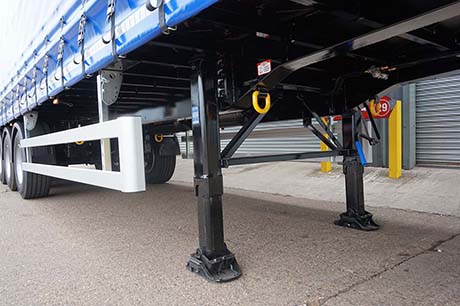Trailer landing legs are essential components designed to support a trailer when it’s uncoupled from the prime mover. They provide stability, prevent tipping, and make loading or unloading safer. One of the most important factors to consider when selecting landing legs is their weight capacity, as using the wrong type can lead to equipment damage or even dangerous accidents.
Understanding Weight Capacity Ratings
The weight capacity of landing legs is typically specified in two ways:
- Static capacity – The maximum weight the landing legs can hold when the trailer is stationary.
- Lifting capacity – The maximum weight they can safely lift to raise or lower the trailer’s front end.
These ratings vary depending on the manufacturer, design, and intended application. Choosing landing legs with the correct capacity is critical for maintaining both safety and compliance.
Typical Weight Capacities for Standard Trailer Landing Legs
Landing legs are available in a range of weight capacities to suit different trailer types and load requirements. Common categories include:
Light-Duty Landing Legs
Generally have a static capacity of around 20–25 tonnes and a lifting capacity of 8–10 tonnes. Suitable for smaller trailers or lighter loads where heavy lifting isn’t required.
Medium-Duty Landing Legs
These are common in general freight transport and container haulage, offering static capacities of 25–50 tonnes and lifting capacities between 10–15 tonnes.
Heavy-Duty Landing Legs
Designed for heavy transport, tankers, or oversized loads, heavy-duty models can have static capacities exceeding 50 tonnes with lifting capacities of 20 tonnes or more. For a range of options, you can explore different trailer landing legs that match your trailer’s needs.
Factors That Affect Actual Load Bearing
While the manufacturer’s rating gives a guide, real-world conditions can impact performance:
- Ground surface – Soft or uneven ground can reduce stability.
- Installation quality – Incorrect fitting can compromise load distribution.
- Maintenance – Worn gears, bent shafts, or damaged feet can weaken capacity.
How to Determine the Right Capacity for Your Trailer
When selecting landing legs, consider:
- The fully loaded weight of your trailer.
- Whether you’ll need to lift the trailer or only hold it stationary.
- The conditions in which the trailer will be parked (e.g., sealed yards vs. gravel or dirt).
Always choose a model with a capacity higher than your calculated requirement to provide a safety margin.
Safety Tips When Using Trailer Landing Legs
- Perform regular inspections for signs of damage or wear.
- Keep gears and moving parts well-lubricated.
- Ensure the legs are locked in place before loading or unloading.
- Always retract landing legs fully before moving the trailer.
In Summary
The weight capacity of trailer landing legs is a vital factor in ensuring safe operation and protecting your trailer from damage. By understanding the differences between light, medium, and heavy-duty models, and by choosing the right capacity for your specific needs, you can ensure stability, safety, and longevity for your equipment.

